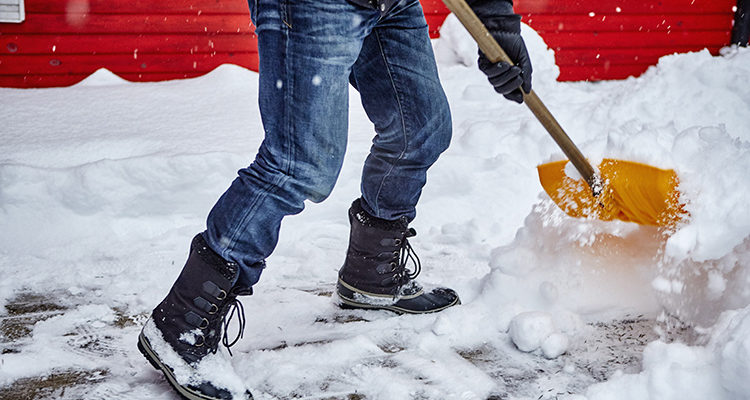It’s January 2019 and fortunately, we can still see the grass. Do you remember January 2018? Snowmaggedon met Snowpocalypse during our Polar Vortex. Handling that kind of snow can actually be a life or death experience.
Whether you are dusting off the dusting or knee deep in cold and white, keep in mind that there are some safety measures you need to take to avoid the ER. Seriously!
According to the U.S. Consumer Product Safety Commission, in 2015:
- More than 158,000 people were treated in emergency rooms, doctors’ offices, and clinics for injuries that happened while shoveling or removing ice and snow manually
- More than 15,000 people were injured using snowblowers
Those are numbers to take seriously. Additionally, snow removal is responsible for 100 deaths per year for a variety of reasons.
Part of the reason can be what type of physical shape you are in. Someone who is used to a vigorous workout and lifting weights is not is as much danger as a couch spud moving a foot of snow with a shovel after no physical exercise in prior months. It strains every muscle in your body, especially your heart. Snow blowers take a bit of the strain off…but not enough.
Cold weather can increase your heartrate and blood pressure before you exert yourself. Blood can clot more easily, and your arteries constrict. This can decrease your blood supply, even in healthy people. Those over the age of 40, especially inactive ones need to show caution. If you suffer from heart disease, DO NOT TOUCH THAT SHOVEL!
Tips to shovel safely:
- Use a shovel that is comfortable for your height and strength
- Do not shovel after eating, digesting uses needed energy
- Do not shovel while smoking for obvious reasons
- Stretch out before you begin
- Take it slow and pace yourself
- Fresh, powdery snow is lighter than wet, heavy snow.
- It is best to push the snow rather than lifting it
- Use a small shovel to lift or a partially fill the shovel to reduce the weight
- Squat with your legs apart, knees bent, and back straight. Lift with your legs. Do not bend at the waist.
- Do not throw the snow over your shoulder or to the side. This requires a twisting motion that stresses your back.
- Take frequent breaks and prevent dehydration by drinking plenty of fluids.
- Do not work to the point of exhaustion
Snow Blower Safety
Be safe with these tips from the American Society for Surgery of the Hand and the American Academy of Orthopedic Surgeons:
- If the blower jams, turn it off
- Keep your hands away from the moving parts
- Do not drink alcohol and use the snow blower
- Be aware of the carbon monoxide risk of running a snow blower in an enclosed space
- Refuel your snow blower when it is off, never when it is running

